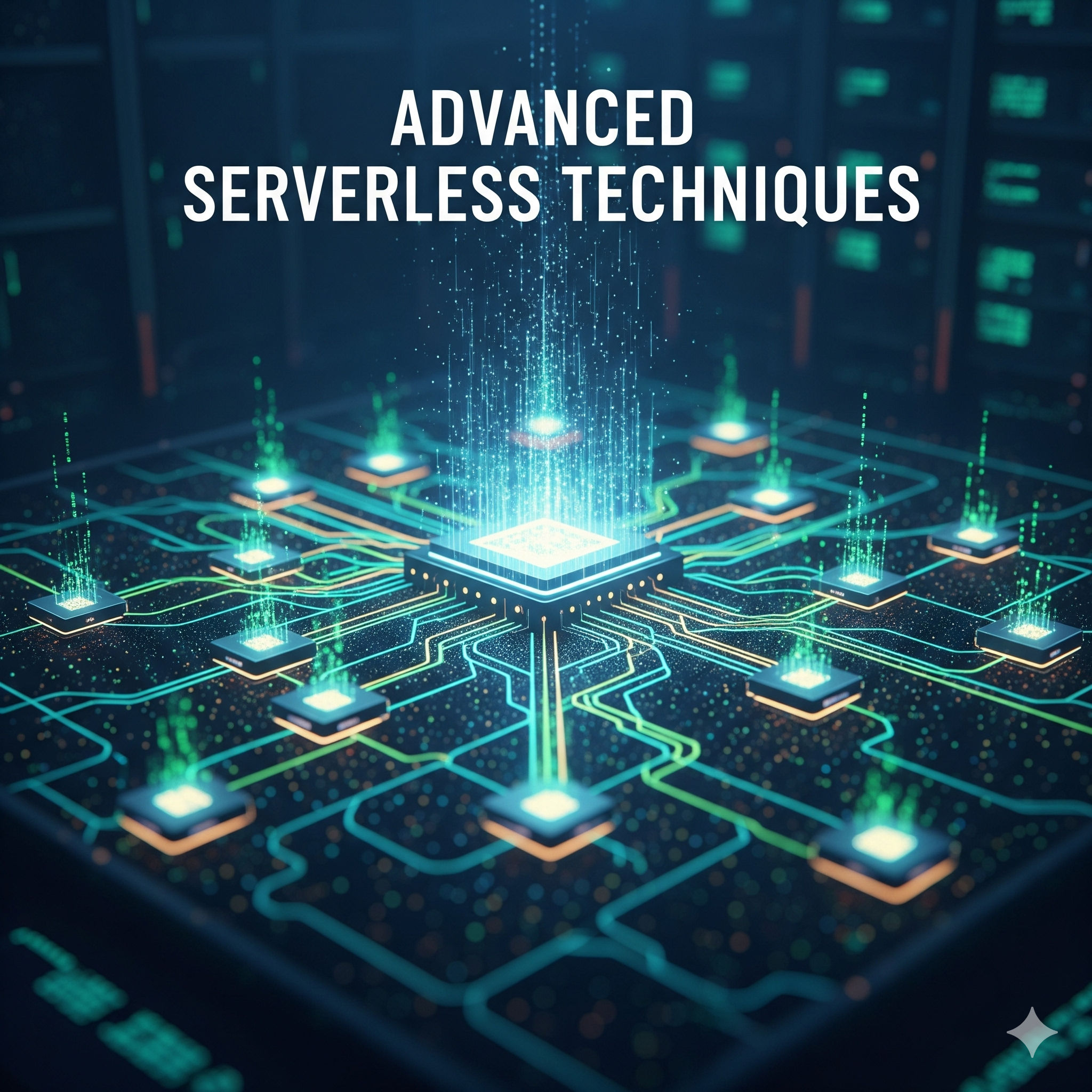Unlocking the Future: Advanced Serverless Techniques You Need to Master
The serverless paradigm has revolutionized how we build and deploy applications, offering unparalleled scalability, reduced operational overhead, and a pay-for-use cost model. But as the technology matures, so too do the techniques for harnessing its full potential. Moving beyond basic function deployment, advanced serverless techniques can unlock even greater efficiency, resilience, and performance for your applications. Are you ready to dive deeper and truly master the serverless landscape?
1. Event-Driven Architectures Beyond the Basics
While simple HTTP triggers are common, the true power of serverless shines in event-driven architectures. This involves orchestrating a series of serverless functions (like AWS Lambda, Azure Functions, or Google Cloud Functions) in response to various events, such as:
- Database Changes: Trigger a function when a new item is added to a NoSQL database (e.g., DynamoDB Streams, Cosmos DB Change Feed). Imagine automatically sending a welcome email when a new user registers.
- File Uploads: Process images, videos, or documents as soon as they're uploaded to object storage (e.g., S3 Event Notifications, Blob Storage Events). For instance, automatically generating thumbnails for every new profile picture.
- Message Queues: Decouple services and handle asynchronous tasks using queues (e.g., SQS, Azure Service Bus, Pub/Sub). This allows your application to remain responsive even during heavy processing loads.
Practical Example: Consider an e-commerce platform where a customer places an order. Instead of one monolithic service handling everything, an event-driven approach would look like this:
- Order Placed Event: A
new_orderevent is published. - Inventory Service (Lambda): Subscribes to
new_order, checks stock, and updates inventory. - Payment Service (Lambda): Subscribes to
new_order, processes payment. - Shipping Service (Lambda): Subscribes to
new_order(after payment success), initiates shipping. - Notification Service (Lambda): Subscribes to
new_orderandshipping_updateevents to send email/SMS updates.
This creates a highly scalable, resilient, and loosely coupled system.
2. Leveraging Step Functions (or Logic Apps/Workflows) for Complex Flows
For more intricate, multi-step workflows, plain event chaining can become hard to manage. This is where orchestration services like AWS Step Functions, Azure Logic Apps, or Google Cloud Workflows become indispensable. They allow you to define state machines that coordinate multiple serverless functions and other services, complete with error handling, retries, and parallel execution.
Actionable Advice: Use Step Functions when:
- Your workflow has sequential steps that depend on each other.
- You need to handle failures gracefully (e.g., retries, fallbacks).
- You require human approval steps or long-running processes.
- You want to visualize and monitor the execution flow of your application.
Practical Example: An automated document processing workflow:
- Start: Document uploaded to S3.
- OCR Function (Lambda): Extracts text.
- Conditional Choice: If OCR successful, proceed. If not, trigger human review.
- Translation Function (Lambda): Translates text.
- Save to Database Function (Lambda): Stores processed document data.
- Notification Function (Lambda): Alerts user.
3. Optimizing Cold Starts and Performance
Cold starts are a common concern in serverless, where a function might experience a delay on its first invocation after a period of inactivity. While platforms are constantly improving this, you can employ advanced techniques:
- Provisioned Concurrency (AWS Lambda) / Pre-warmed Instances (Azure Functions): Dedicate a pre-initialized number of execution environments to your functions, eliminating cold starts for those instances. This is ideal for latency-sensitive applications.
- Memory and CPU Optimization: Experiment with increasing memory allocation for your functions. More memory often means more CPU, leading to faster execution and potentially reducing cold start times.
- Language Choice: Interpreted languages like Python or Node.js generally have faster cold starts than compiled languages like Java or .NET (though recent platform improvements are narrowing this gap).
- Small Deployment Packages: Minimize your function's deployment package size by only including necessary dependencies. Smaller packages download faster, leading to quicker cold starts.
4. Serverless Security Best Practices
Security is paramount. Beyond basic IAM roles, consider these advanced serverless security techniques:
- Least Privilege: Grant functions only the absolute minimum permissions they need to perform their task.
- VPC Integration (AWS Lambda, Azure Functions VNet): For functions that need to access resources within your private network (e.g., databases, internal APIs), run them within a Virtual Private Cloud (VPC) or Virtual Network. This enhances network isolation.
- Secrets Management: Never hardcode API keys or database credentials. Use dedicated secrets management services (e.g., AWS Secrets Manager, Azure Key Vault, Google Secret Manager) to securely store and retrieve sensitive information at runtime.
- Input Validation: Always validate and sanitize all input to your serverless functions to prevent injection attacks and other vulnerabilities.
- Runtime Monitoring and Logging: Implement robust logging and monitoring (e.g., CloudWatch Logs, Azure Monitor, Stackdriver Logging) to detect suspicious activity and troubleshoot issues quickly.
5. Going Hybrid with Edge Computing and Serverless
The convergence of serverless and edge computing is a powerful trend. Services like AWS Lambda@Edge or Cloudflare Workers allow you to run serverless functions directly at content delivery network (CDN) edge locations, closer to your users.
Benefits:
- Ultra-Low Latency: Process requests and manipulate content at the edge, reducing latency for global users.
- Enhanced Security: Filter malicious requests or implement custom authentication closer to the source.
- Content Personalization: Dynamically modify content based on user location, device, or other criteria before it even reaches your origin server.
Practical Example: For a global media company, you could use Lambda@Edge to:
- Redirect users based on their geographic location to the nearest S3 bucket.
- Perform A/B testing by serving different versions of your website to different users.
- Implement custom authentication for your static assets.
Conclusion: Embrace the Serverless Evolution
Serverless is no longer just a buzzword; it's a mature, evolving paradigm. By adopting these advanced serverless techniques, you can move beyond basic function deployment to build more robust, efficient, secure, and performant applications. From sophisticated event-driven architectures and orchestrated workflows to performance tuning and edge computing, mastering these concepts will empower you to fully leverage the serverless revolution and build the future of cloud-native applications. Keep experimenting, keep learning, and keep building!

